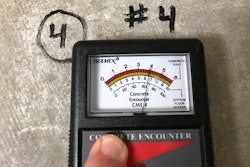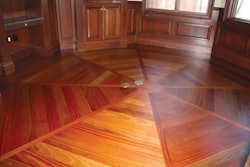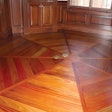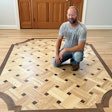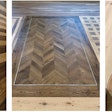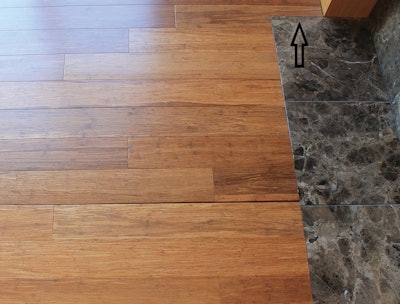
Misconceptions abound throughout the flooring industry surrounding the dimensional stability, overall performance and general viability of solid strand bamboo using the “click” floating installation system. With the onset of winter prompting typical seasonal fluctuations in humidity, clarity on this product can go a long way to avoiding and/or remedying potential flooring failures that continue to be reported within our trade publications and flooring conferences.
Bamboo: Not Created Equal
Unfortunately, production guidelines are not currently in place to regulate bamboo products entering U.S. markets. With that, inferior bamboo flooring may be contributing to failures within the category. Each manufacturer must be accountable for the quality of material they produce. As a contractor or retailer, you can help protect yourself by purchasing and installing bamboo flooring secured through reputable suppliers that can accurately document the manufacturing process. That process includes many steps, from “click” licensing agreements, raw material selection and kiln drying, to milling technology, finishing, quality control, ocean-bound freight and more.
Physics of Bamboo
Common knowledge dictates that all wood flooring expands and contracts in response to its environment. While solid strand bamboo reacts similarly to how a wood floor does, additional on-site acclimation stabilizes the phenolic resins bonding the bamboo “strands” together and will reduce movement after the floor has been installed.
Solid strand flooring expands and contracts substantially more than its engineered counterparts. Installation failures, including separation or buckling, can result when installers lack a clear understanding of the physics behind a floating floor.
When flooring is attached directly to the subfloor, each piece reacts individually to its environment. Conversely, floating floors with planks joined together by a locking mechanism will expand or contract as a complete rectangular unit, which eventually translates into substantial movement around the perimeter of the room. Attaching two rooms together without expansion gaps (using T-molding) intensifies the problem, creating a battle between forces and increasing the potential expansion/contraction two-fold.
Floating floors that separate or buckle indicate there are obstructions restricting the flooring from its normal movement. A floating floor without restrictions on its normal movement cannot pull itself apart or buckle.
Education is Key
Knowledge is the key to success. Be sure to read all installation guidelines prior to installing solid strand click floors, as they will differ from most floating floor applications. And, if you have questions, contact the manufacturer for additional guidance. Floating strandwoven bamboo click flooring is a different animal. For example, all vertical surfaces must be undercut (specifically wall base and door jambs), or the transition/base must be wide enough to allow the flooring to expand or contract without showing gaps or stopping expansion. T-moldings must be used to separate rooms or areas of the project. Following these simple procedures will eliminate obstacles that restrict seasonal movement of the floor and can lead to installation failures resulting in separation or buckling.
Repairs Are Easy
Correcting common separation or buckling issues is typically easy, requiring a little time and patience.
Correcting common separation or buckling issues is typically easy, requiring a little time and patience. These issues should not, under normal circumstances, require dismantling and reinstalling the floor. The key is to provide relief around the obstacle that is restricting normal expansion and contraction. For example, T-molding can be retrofitted by cutting out a strip in the flooring and adhering the T-mold directly to the subfloor. Separation can be remediated using ratchet straps while lightly tapping the flooring to reengage the locking system. Normally, this will pull the flooring back together. Again, before dismantling, reinstalling or completely replacing the floor, call the manufacturer for guidance. Repairs can be an easy and a cost-effective solution for a floor that has issues.
Fact or Fiction?
Solid strand click bamboo represents an eco-friendly, cost-effective and versatile product that performs well—when acclimated and installed following the manufacturer’s guidelines. Take a moment to get educated, and you’ll discover that many misconceptions surrounding solid strand click bamboo are simply fiction.
















